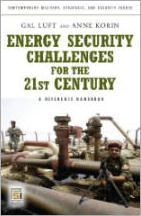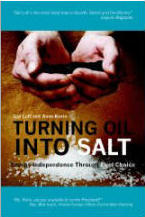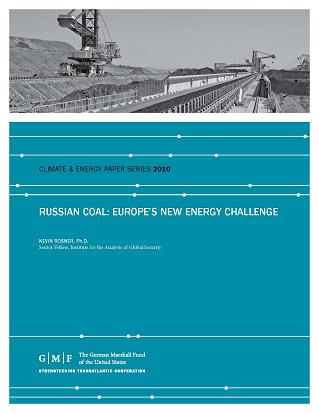CNPC, Sinopec, and CNOOC/PetroChina are vigorously pursuing oil supply contracts with foreign firms. To this end, the Chinese oil majors have acquired a variety of holdings in Angola, Azerbaijan, Canada, Chad, Indonesia, Iraq, Iran, Kazakhstan, Myanmar (Burma), Nigeria, Peru, Russia, Singapore (pending), Saudi Arabia, Sudan, Turkmenistan, Uzbekistan, and Venezuela.
In particular, PetroChina is determined to on-take oil/gas infrastructure development projects and to acquire equity in oil industry assets. PetroChina is responsible for 75 projects in 29 countries and is the world’s second-biggest company by value.
Abundant with cash, the People’s Republic of China (PRC) is wisely spending its US$1.95 trillion forex reserves to buy energy assets made cheaper by oil’s 52.47% decline from a record US$147.27 a barrel last July.
China's economic expansion has placed it on a collision course with global competitors in the market for scarce resources including critical oil and gas supplies. The PRC accounted for nearly 40% of the increase in global oil consumption between 2004 and 2007. In a short period of time, China has evolved from a position as an oil exporter in 1992 to the world's second largest oil importer in May 2008.
China's dependence upon oil supply
China is stepping up its means to secure additional oil supply contracts around the world. The geopolitical, economic and military implications are immense.
In 2004, Chinese oil imports totalled 3.40 million barrels a day (m/bd). Today, the PRC consumes approximately 7.85 m/bd. It is estimated that China will increase oil imports to as high as 9.60 m/bd by 2010, 11.40 m/bd by 2015, 13.50 m/bd by 2020, and 16.10 m/bd by 2025.
If these estimates remain true, then China’s annual oil imports will incrementally grow closer year-by-year to eventually reach about 50% of the US annual oil imports. Specifically, it is predicted China will import 53.6% of the equivalent US oil imports by 2025. China will take several more decades to equal US oil imports and thus presently remains a long way behind its US counterpart. Nonetheless, assuming China continues to expand its economy, whilst pari passu the US suffers financial meltdown and continuing recession/depression, then China’s oil imports will almost certainly become closer to those of the US.
CHINESE OIL IMPORTS
Million/Barrels Day (m/bd)
| Year | Chinese Oil Imports | US Oil Imports | % Chinese to US Oil Imports |
| 2004 | 3.40 | 13.40 | 25.4 |
| 2009 | 7.85 | ||
| 2010 | 9.60 | 23.80 | 40.3 |
| 2015 | 11.40 | 25.80 | 44.2 |
| 2020 | 13.50 | 27.90 | 48.4 |
| 2025 | 16.10 | 30.00 | 53.6 |
| 2030 | 18.79 | 28.50 | 65.9 |
(NOTES: The figures shown are over inflated. They were originally prepared as high economic growth case figures as an adaptation from official EIA sources in October 2005. They are detailed in a report entitled The Changing Risks in Global Oil Supply and Demand: Crisis or Evolving Solutions, first working draft, page 31, authored by Anthony H. Cordesman and Khalid R. Al-Rodhan. This document was prepared for the Center for Strategic and International Studies (CSIS) in Washington DC.
Estimated figures for Chinese and US oil imports are taken from the BP Statistical Review of World Energy 2005 for the year 2004, and from EIA Estimates of World Consumption by Region: 2001 – 2025 for the other years depicted, except for 2009. It has not been possible to source an estimated figure for US oil imports in 2009. The figures given for 2030 are arbitrary figures.
Beyond 2025, it is anticipated US oil imports will gradually fall as the US is planning to reduce its dependence upon overseas sourced oil supply.
US Oil Imports are assumed to drop from 30.0 m/bd in 2025 to about 28.5 m/bd in 2030. This estimate is conservative and may be inaccurate.
China is likely to become more oil dependent upon overseas sourced oil supply over the same period and beyond 2030, but this is by no means certain.
David Greene and Paul Leiby produced a research paper entitled Oil Security Metrics Model for the Oak Ridge National Laboratory (ORNL) in March 2005. Some useful mathematical and statistical concepts are detailed in this paper. Statistical forecasting techniques (modeling) could be applied to further refine the above Comparison Table to more accurately reflect the global economic meltdown and continuing recession.)
China began to suffer from oil supply shortages in 2007. These shortages led to price increases in petrol and diesel of up to 18% in June 2008. In an effort to boost domestic oil production, China has invited foreign investment in its oil infrastructure. With a shortfall of some 160,000 b/d predicted for 2010, China has asked six countries to help fill this gap. The UK, South Korea, Russia, United Arab Emirates (UAE), US and Saudi Arabia have jumped on the bandwagon. Joint venture proposals with CNPC largely relate to the mainland based refining sector and include British Petroleum (BP), South Korea’s SK and LG, Russia’s Rosneft, a United Arab Emirates (UAE) led investor group, ExxonMobil Corporation, and various Saudi oil enterprises. Even though in 2008 China may be able to ramp up its refinery capacity by approximately 54.5 million tons, there is still the likelihood of a gaping shortfall in oil supply.
The US, Europe, South America, and Australasia have become steadily more dependent on Asian manufactured goods. In turn, this requires Asia to import petroleum, largely from the Middle East. The contrary argument to be stated is that much of China’s increase in import dependence for direct petroleum products is actually to meet consumer demand in the US and other Western markets. If demand falls and these markets decline, China will be able to cut back on domestic oil consumption.
Notwithstanding, further analysis of China’s oil consumption leads to the general conclusion that China is likely to treble or even quadruple oil imports by 2040 ceteris paribus. There are other market forces that could generate even greater demand.
Chinese oil supply activities overseas
Myanmar
In March 2009, China indicated the PRC is to start construction this year on oil and gas pipelines more than 2,000 km long from Kyaukypu Port on the Bay of Bengal through Myanmar to southwest China. These pipelines will pass through Kunming in Yunnan province and continue through Guizhou province to Chongqing municipality in China. The construction in Yunnan province has commenced during the first half of 2009 as part of the US$10.5B energy project. The project includes railway, road and waterway construction, as well as upgrading the port at Kyaukpyu in Arakan State. China has secured a thirty-year deal from the Burmese military junta for natural gas tapped off the Myanmar coast. China will use these new pipelines to avoid shipping crude oil and gas products through the Malacca Strait chokepoint (through which 80% of China’s oil imports are channeled).
Nigeria
In Nigeria, CNOOC has purchased a 45% stake for US$2.3B in a major oil and gas field in the Niger Delta. The Nigerian output amounts to some 2 m/bd and this country is the fifth-biggest supplier of oil to the US. China has won some US$4B worth of preferential Nigerian exploration rights. Concurrently the PRC has provided military assistance to Nigeria, namely light patrol boats for the Niger River Delta, and two squadrons of F-811M jets to the Nigerian air force. Munitions assistance has also been provided to Nigeria. China is thus set to compete with the US for Nigerian oil supply.
Venezuela
To sustain future long-term contracts for oil supply, China is also negotiating with President Hugo Chavez in Venezuela. This country has been supplying the US with 3 m/bd of oil making it America’s fourth-largest supplier of crude. However, China now wants some of this crude oil and will therefore directly compete with the US. To facilitate this, China has already invested US$3B in Venezuela’s oil sector. In May 2008, Chinese energy company PetroChina, a subsidiary of CNPC, announced a deal with Venezuelan oil company Petroleos de Venezuela (PDVSA) to build a 400,000 b/d refinery in China’s Guangdong province. The deal allows Hugo Chavez to increase his political and economic ties with China.
Sudan
Additionally, China has implemented a powerful “oil for guns” programme with Sudan. With the exception of Russia, this country has become China’s largest overseas oil investment. CNPC owns 40% of the Greater Nile Petroleum Operating Company, a consortium that dominates Sudan’s oil fields. CNPC has invested more than US$8B in the Sudanese oil sector, including funding for new oil pipelines. Another Chinese company, Sinopec is constructing a 1,500 km pipeline to Port Sudan on the Red Sea. China is also building a new tanker terminal at this port possibly to handle very large crude carrier (VLCC) tankers. Sudan now supplies China with 10% of its total oil imports.
Caspian
In 1997, Beijing offered US$4.3B for a large stake in the Aktobe oil field near the Caspian Sea. The PRC promised another US$3.5B to build a 3,040 km pipeline from the Atyrau in Kazakhstan to China. Although the CNPC obtained an 86% stake in the Aktobe field, the pipeline was delayed in view of its high construction costs. Three construction phases were envisioned with two already having been completed. The first phase was completed in 2003. It connects the Aktobe field with the oil hub at Atyrau. The second segment, approximately 1,000 km in length, from Atasu in central Kazakhstan to Alashankou in the western Chinese province of Xinjiang (costing around US$750M) was completed in December 2005. The third and remaining segment will link up with the completed segments and is due for completion in 2011. This pipeline will have the capacity to supply three Chinese refineries with 200,000 b/d of crude oil. CNPC also agreed to provide 20 years of development aid to the Kazakh oil firm, Aktobemunaigaz, after purchasing a 60% share of the company.
The PRC has been purchasing oil fields elsewhere in Kazakhstan. For instance, in 2003, CNPC bought a 50% share in the North Buzachi field. This field is thought to have reserves of some 2 billion barrels of oil. CNPC subsequently aligned with Sinopec to bid for the 16.78% share of the Caspian Sea offshore Kashagan reservoir held by British Gas (BG Group). The Kashagan offshore field in the northern section of the Caspian Sea is possibly the largest oil field outside of the Middle East with estimated reserves of 8-14 billion barrels of oil and natural gas. The large international consortium, responsible for developing the Kashagan field, blocked the CNPC/Sinopec bid.
The oil-consuming jackals, including China, are gathering around the shores of the Caspian Sea. They are aspiring to plunder the vast oil and gas reserves both onshore/offshore in this politically unstable region. These resources are likely to be exhausted before the end of the 21st century.
Iran
Iran supplies 11% of China’s oil imports, and is therefore a crucial resource partner. Sinopec has recently implemented an oil and natural gas agreement with Tehran worth in excess of US$70B. By comparison, this huge investment is about ten times larger than the PRC’s current investments in Nigeria. This is the biggest energy deal yet by any member of OPEC. Under this agreement, Beijing is committed to develop the giant Yadavaran oil field and buy 275 million tons of LPG over the next 30 years. The Yadavaran oil field is expected to produce 300,000 b/d at full capacity. Tehran has also agreed to export to China approximately 150,000 b/d of oil at market prices for 25 years. When in full production, this will more than double the Iranian oil imports quoted below for 2008. Iran could overtake Angola as early as 2011/12 and may become the PRC’s second largest supplier after Saudi Arabia.
The largest Chinese oil acquisition to date is that of the Canadian oil company PetroKazakhstan. This company has large reserves in Kazakhstan. The company’s assets include eleven oil fields and licenses to seven exploration blocks. Early in 2007, CNPC offered US$4.18B for the company, including US$55 cash per share and US$76 per share toward the creation of an offshoot company. This was to be led by Bernard Isautier, CEO, for PetroKazakhstan. In August 2007, PetroKazakhstan officially announced its acceptance of the CNPC offer to takeover the Kazakh oil company. The purchase was complemented by the completion of the Sino-Kazakh oil pipeline that has already delivered in excess of an estimated 300,000 b/d of crude oil to China.
Saudi Arabia
In 1999, China established a “strategic oil partnership” with Saudi Aramco, under which Sinopec would cooperate with the Saudi company in developing oil and gas fields in Saudi Arabia while Saudi Aramco would invest in refineries and petrochemical plants in China. In 2003, Saudi Aramco agreed to become part owner of a US$3.6B refinery and petrochemical complex Sinopec is building in the PRC’s Fujian province. Sinopec was also awarded the right to develop natural gas in Block B of the Royal Kingdom’s Empty Quarter. A few years later, in 2006, during the visit of Chinese President Hu Jintao to Riyadh, Prince Walid bin Talal, a member of the royal family, stated that “as China is a big consumer of oil, the Royal Kingdom needs to open new channels beyond the West to provide a mutual beneficial arrangement”. Chinese oil imports from Saudi Arabia are set to increase dramatically. In 2008, Saudi Arabia was the PRC’s largest supplier at about 725,000 b/d, followed by Angola at 596,000 b/d and Iran at 425,000 b/d.
Summary
China’s national oil companies have invested in oil ventures in over twenty other countries in North Africa, Central Asia, Southeast Asia, Latin America, and North America. The total investment, stemming from this frantic shopping spree of buying up oil and gas fields and companies worldwide, is conservatively estimated at some US$40B. The true figure is likely to be much greater.
The aforementioned investments represent only a sample of the patchwork of international partnerships, strategic alliances, and acquisitions that Chinese oil and gas companies have finalized in recent years.
Why so much Chinese buying aggression?
The PRCs aggressive policy to buy crude oil/gas supplies and to invest in oil infrastructure development on a worldwide basis is vested in the following reasons (not necessarily in order of priority):
(1.) China wishes to continue with massive consumer and manufactured goods production (vis-à-vis consumer products such as motor cars, white goods, electronic goods, luxury goods, and public transport for immediate internal consumption): to expediently meet and satisfy internal domestic demand and to raise general living standards to equal those of the West. China has the largest 1.3 billion consumer market in the world.
The “have-nots” in China desire to catch up and overtake the “haves” in the West. There is no greater incentive and human desire as far as the Chinese government is concerned.
(2.) China wants to continue to export large volumes of consumer goods and services worldwide to retain its advantageous dominant position as the world’s leading exporter. Products exported include clothing and textiles, footwear, household furnishings, electronic goods, white goods, and a plethora of other goods. Every household in the West now possesses a significant number of Chinese manufactured goods. China has and will penetrate every market in the West including the emerging driver-economies of Brazil, India, and resurgent Russia (counterpart members of the BRIC consortium).
(3.) The PRC is in a self-equilibrium economic mode and wishes to accelerate its growth. As such, China must reinforce its unique symbiotic relationship with the West, particularly with the US, one of its largest markets. The US accounted for about 90% of China’s US$295B trade surplus in 2008. China needs the West, and the West needs China. Global buyers will continue to enjoy acquiring perceived-quality Chinese goods at low cost.
The momentum could be self-perpetuating.
(4.) China sees itself as the leader of a new world economic order, to eventually become the world’s leading economy by 2020/30 and to thereby acquire a dominant hegemonic position in world affairs and geopolitics. The country is deliberately posturing itself for future domination of the West.
(5.) Being “cashed up” with some US$1.95 trillion in forex reserves, China possibly will never again have such a golden opportunity to acquire crude oil/gas assets (and other worldwide energy resources) at such a low cost, while the global financial meltdown continues. Effectively, the People’s Bank of China is close to becoming the world’s de facto banker and has mounted a serious challenge to the IMF, to the Arab petrodollar and to overseas financial institutions. The artificially induced low value of the Yuan has permitted China to rapidly build up its forex reserves. “Thanks for your US dollar, here’s your change expressed in a foreign exchange certificate, as fifty Fens or otherwise.” This is a form of “hard currency larceny”. How could the West be so naive and allow itself to be financially ambushed in this manner?
(6.) China seeks to buy crude oil/gas (plus other energy resources) as it realizes these valuable commodities are finite and exhaustible. The rate of discovery of new and significant oil reserves is dramatically falling and most existing oil/gas fields have surpassed their peak. The age of easy oil is over, and what remaining oil there is will become increasingly technically difficult to extract.
(7.) China intends to greatly increase its official strategic reserve of oil (and LNG/gas products). The first annual phase of the PRC’s strategic petroleum reserve is due to be completed in 2009. The reserve will hold 100 million barrels of oil (m/bo). The second annual phase is planned to hold 200 m/bo. If this annual rate of stockpiling is successful, China will launch successive phases. This may eventually increase net storage capacity to beyond 500 m/bo sometime after 2013. Should this occur the storage volume will be the largest national strategic oil reserve the world has ever known.
Having such a large strategic reserve, to the obvious disadvantage of other world powers, means that China can effectively mount a sustained conventional manpower- abundant military campaign (defensive/offensive) without the need for recourse to limited-theatre nuclear weapons and WMD. The West will be tactically impaired and might have to be the first to use nuclear weapons to impede any Chinese advances/gains.
While nuclear deterrence will possibly thwart any Chinese intentions to start a conventional military campaign, China’s military philosophy based on “antiaccess” strategies will invoke a more defensive than aggressive posture.
(8.) Finally, it must not be forgotten the China has embarked upon a significant programme of military expansion. On a per annum per capita basis, the PRC’s military expenditure of around US$231B seems very modest and circumspect compared with others around the globe. But with a 1.3 billion population, any small per capita incremental increases will have tremendous implications in future years.
The military modernization programme comprises a component to upgrade PRC blue- water naval power to help stave off any aggression toward China’s inbound sea borne oil/gas shipments. The Pentagon believes the programme to be defensive in nature but some pundits disagree with this analysis.
Conclusions
The bludgeoning Chinese investment in the oil/gas industry across many nations will impact upon geopolitical, economic and military factors inherent within the present system of global stability. It is a serious battle for energy resources.
As China becomes increasingly oil dependent, the homogeneity and paradigm in oil supply for other nations will be greatly disturbed. It has been said that the PRC’s increasingly mercantilist strategy to assert control of oil/gas supplies and transport routes, risks fueling tensions and conflict amongst SE Asian and other nations wider afield; many of these are already facing sensitive transition to accommodate China’s rising power over the next two decades.
History sometimes demonstrates that nations often stockpile oil/gas (and other energy resources) in preparation for regional conflicts and potential conflicts with energy-hungry competitors and adversaries. In the climate of worsening weather patterns, continuing global financial meltdown and increasing energy resource scarcity, the probability of a military confrontation during the 21st/22nd centuries in which oil may play a role has dramatically heightened.
CAPT David L. O. Hayward (Rtd) is a Defence Research Analyst with the Royal United Services Institute (RUSI) of Australia Inc., Canberra



 Archive
Archive 










